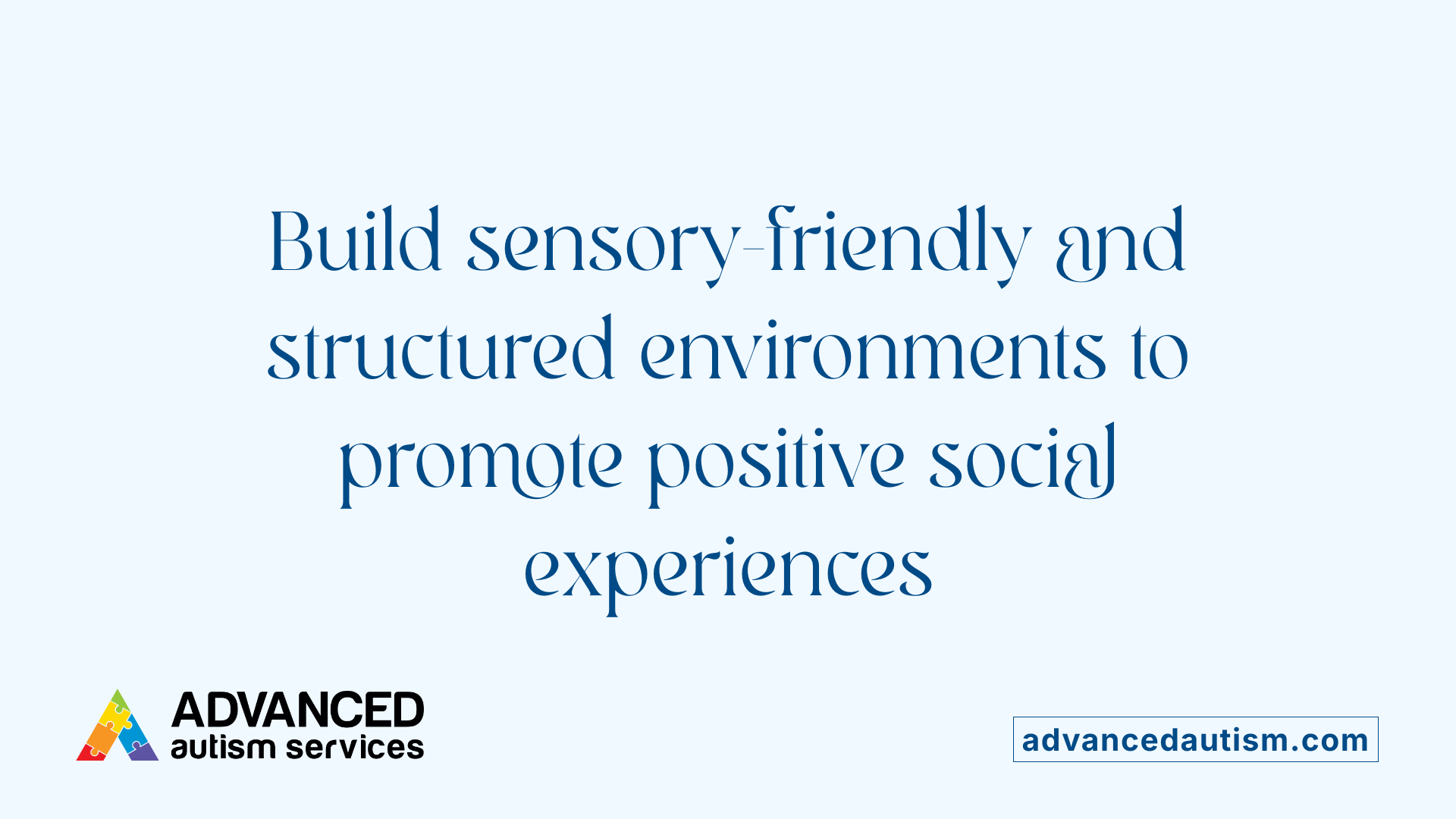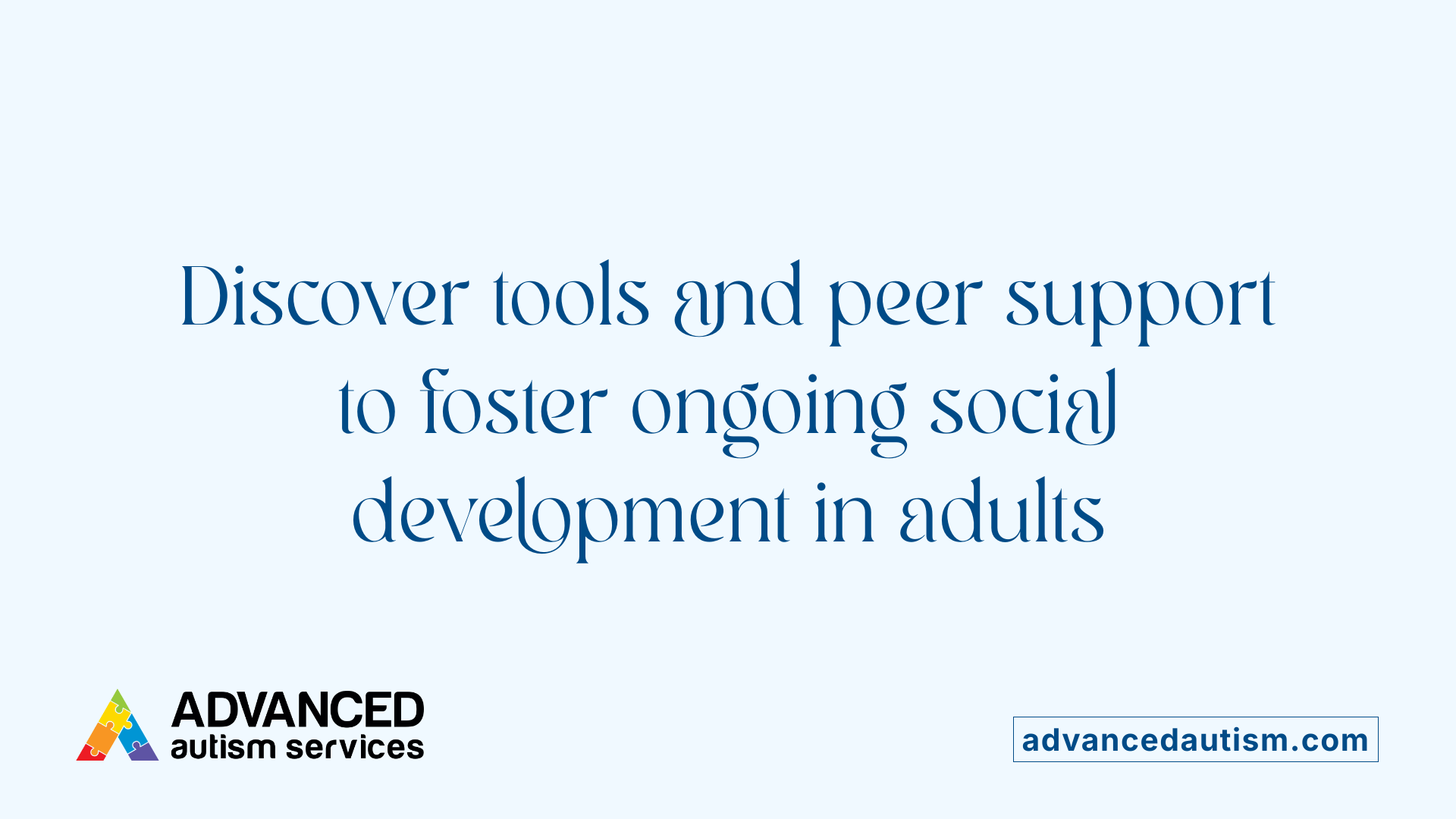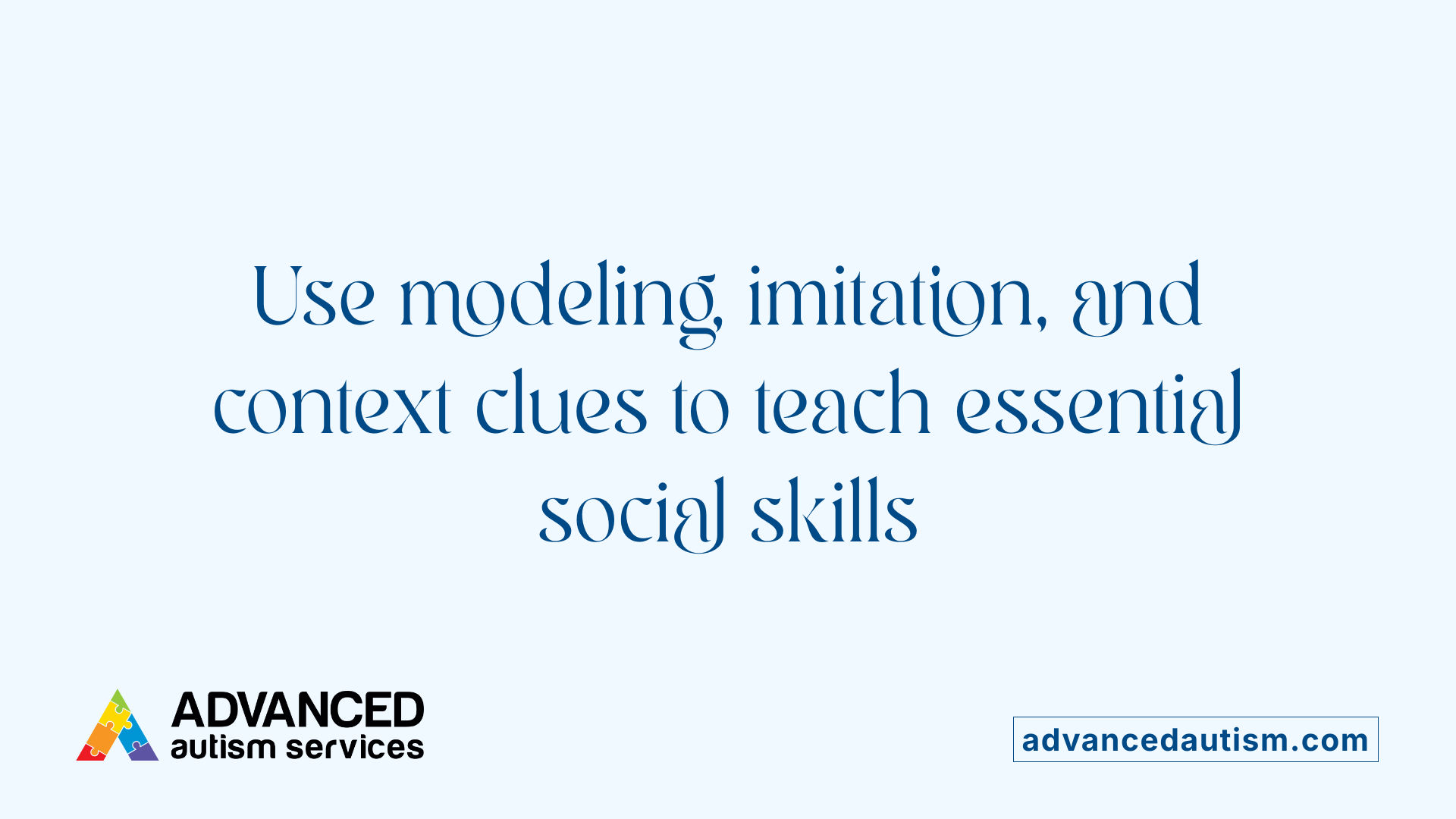Understanding the Foundations of Social Skills in Autism
Autism Spectrum Disorder (ASD) impacts social interaction, communication, and behavior. While social skills often develop naturally in most children, autistic individuals may experience unique challenges in these areas. Recognizing these differences and applying tailored strategies can greatly improve their ability to connect, communicate, and form meaningful relationships. This comprehensive guide explores practical approaches, supported by evidence-based practices, to foster social development across all ages.
Supporting Communication and Social Interaction in Autistic Individuals
What are effective strategies to support communication and social interaction in autistic individuals?
Supporting communication and social skills in autistic people involves a combination of early and tailored approaches. Initiating speech therapy as early as possible can provide foundational support for developing language skills. Therapists can introduce various tools and techniques to bolster understanding and expression.
Using augmentative and alternative communication (AAC) devices and tools is also crucial. These include communication boards, picture exchange communication systems (PECS), and speech-generating devices. Such tools can help non-verbal or minimally verbal individuals express their needs and ideas more effectively.
Visual supports greatly enhance comprehension. Using symbols, pictures, and visual schedules can offer concrete cues about routines, social expectations, and desired behaviors. These supports make abstract concepts more accessible and encourage expressive communication.
Engaging in structured social activities further fosters social interaction. Techniques such as social narratives and role-playing help children and adults understand social situations, rules, and responses. Video modelling demonstrates desired social behaviors, making learning tangible.
Creating opportunities for practice in small, supervised groups allows individuals to improve turn-taking, sharing, and understanding body language and facial expressions. Celebrating personal strengths, whether in music, humor, or visual skills, boosts confidence and motivation.
Ultimately, customizing strategies based on individual needs, preferences, and strengths ensures that interventions are effective. By combining professional guidance, visual supports, structured activities, and positive reinforcement, caregivers can help autistic people develop meaningful social connections and improve communication.
Understanding Social Behaviors in Autism
How do autistic people typically interact socially, and what are some examples of social interaction in autism?
Autistic individuals often have unique ways of engaging in social interactions that can differ significantly from neurotypical behaviors. They may avoid direct eye contact or find it uncomfortable, preferring to communicate in a straightforward and factual manner. For example, rather than engaging in small talk, they might focus intensely on specific interests, providing lengthy information dumps about their favorite topics.
Common social behaviors include difficulties in interpreting non-verbal cues such as facial expressions, body language, or tone of voice. This can make understanding others' feelings or intentions challenging, leading to social misunderstandings or feelings of isolation.
In conversation, they might struggle to initiate or maintain dialogues, sometimes replying with echolalia (repeating words or phrases) or giving unrelated answers. Their social focus can be strongly directed toward interests, sometimes resulting in conversations that revolve around specific topics, which may seem one-sided but are meaningful for the individual.
Sensory sensitivities play a role, as bright lights, loud sounds, or crowded environments can be overwhelming, prompting withdrawal from social settings. Additionally, routines and predictability are often preferred, leading to a reluctance to participate in spontaneous or unstructured activities.
Supporting these social patterns involves explicit teaching of skills such as turn-taking, understanding social cues, and employing visual supports like social stories or role-playing activities. Creating structured social opportunities allows autistic individuals to practice interactions in a safe and predictable setting, fostering confidence and social understanding.
In summary, social interactions in autism are shaped by individual preferences, sensory sensitivities, and communication styles. Tailored strategies that respect these differences enable better social engagement and meaningful connections.
Creating Supportive Environments for Better Interactions
 Supporting social interactions for autistic individuals involves a thoughtful combination of patience, respect, and tailored strategies. It's important to recognize that each person is unique, with their own communication preferences and sensory sensitivities.
Supporting social interactions for autistic individuals involves a thoughtful combination of patience, respect, and tailored strategies. It's important to recognize that each person is unique, with their own communication preferences and sensory sensitivities.
One of the essential approaches is to incorporate routines, visual supports, and sensory accommodations into daily activities. Structured routines help reduce anxiety by providing predictability, while visual supports like picture cards or social stories clarify social expectations and important social cues. Creating sensory-friendly spaces with soft lighting or noise-canceling headphones can make social settings more comfortable.
Engaging interests also serve as excellent conversation starters. Understanding an autistic person's hobbies, such as music or art, allows others to connect on shared topics and encourages participation.
Advance planning and clear communication are crucial. Sharing details about upcoming social events, using simple and direct language, and offering advance notice help individuals prepare mentally and reduce uncertainty. Breaking down social plans into smaller steps further eases anxiety.
It is equally important to provide opportunities for breaks and sensory downtime. Overstimulation can lead to stress or meltdowns, so allowing pauses and creating quiet, calming areas offers relief and promotes positive social experiences.
By creating an environment that prioritizes patience, understanding, and tailored supports, we can foster more meaningful social engagement for autistic individuals. This approach not only improves their social skills but also enhances their confidence and overall wellbeing.
Recognizing and Managing Inappropriate Behaviors
What are some examples of inappropriate social interactions in autism?
Inappropriate social behaviors in autism often include actions that are misunderstood or considered socially unacceptable by neurotypical standards. For example, individuals may avoid eye contact or speak in ways that seem unusual, such as echolalia—repeating words or phrases without understanding their context. They might act as if others are not present, struggle to follow social norms, or show little regard for personal space. Some may have difficulty interpreting unspoken social cues, leading to off-topic comments or inappropriate responses.
Physical reactions are also common; many individuals might react negatively to physical contact, showing distress such as screaming or hitting. They may become upset during social situations due to sensory overload or difficulty understanding the social environment. Often, these behaviors are not intentional but are attempts to communicate feelings or cope with overwhelming stimuli.
Understanding these behaviors helps caregivers and professionals implement strategies to reduce them.
Understanding behaviors like echolalia and reactions to contact
Echolalia is a typical feature in many individuals with autism, involving the echoing or repetition of words and phrases. While it might seem disruptive, it often serves as a communication tool or a way to process language. Recognizing this as part of their communication style rather than misbehavior is vital.
Reactions to physical contact, such as screams, hitting, or pulling away, are common responses to sensory sensitivities or personal boundaries. These reactions indicate discomfort rather than aggression or defiance. Understanding the sensory sensitivities underlying these responses allows for better management.
Strategies for reducing maladaptive behaviors
Reducing inappropriate behaviors involves both understanding the root causes and applying targeted strategies. Visual supports like social stories and clear, simple instructions can help individuals understand social expectations.
Reinforcement of positive interactions through praise, rewards, or preferred activities encourages adaptive behaviors. Offering choices and providing a predictable routine can reduce anxiety, which often exacerbates behavioral issues.
Creating a calm and safe environment, along with gradual exposure to social situations, helps develop tolerance and understanding. Additionally, working with professionals to tailor interventions, such as behavioral therapy or sensory integration strategies, can significantly improve social responses.
Reinforcement of positive interactions
Recognizing and praising positive social behaviors, such as sharing, taking turns, or making eye contact, helps reinforce these skills. Using specific, behavior-based praise like “Great job waiting your turn!” or “I liked how you shared your toy,” encourages repetition.
Implementing a reward system, involving preferred activities or tokens, can motivate individuals to engage in appropriate social interactions. Modeling desired behaviors through role-play or video modeling also teaches proper social responses.
Creating ongoing opportunities for practice and providing consistent, gentle feedback supports the development of more adaptive social skills. Over time, these strategies foster better understanding, reduce inappropriate behaviors, and promote meaningful social connections.
Fostering Social Skills and Friendships
How can participation in shared interest groups help autistic individuals build friendships?
Engaging in community or local interest groups related to hobbies like music, art, or sports offers natural opportunities for social interaction. These groups allow autistic individuals to connect with others who share similar passions, reducing social anxiety and creating more comfortable environments for conversation. Structured activities and shared goals promote teamwork and friendship development, making socializing feel more manageable and less overwhelming.
What role do peer mentoring and support programs play?
Peer support initiatives pair autistic individuals with trained mentors or supportive peers who exemplify positive social skills. These programs provide safe settings for practicing interactions and can model appropriate communication, empathy, and boundary-setting. The mentorship relationship boosts confidence, encourages shared experiences, and helps develop social skills through one-on-one guidance, often leading to stronger, more meaningful friendships.
How do online communities and social platforms benefit autistic social development?
Online communities like autism-specific forums or social groups such as Circles Network and Asperger Syndrome Meetup offer predictable and accessible environments for social engagement. They remove some sensory and social barriers, allowing users to communicate at their own pace and comfort level. Virtual interactions help autistic individuals practice social skills, foster friendships, and gain social confidence while maintaining control over their interactions.
Why is self-acceptance important in developing friendships?
Accepting and embracing one's identity as autistic can significantly improve self-esteem and reduce social anxiety. Self-acceptance encourages authentic interactions and helps individuals feel more comfortable expressing themselves. When autistic individuals are confident in their identity, they are more likely to seek out and maintain meaningful relationships that respect their needs and boundaries.
How can authentic and respect-based interactions foster long-lasting friendships?
Building friendships on honesty, mutual respect, and understanding forms a solid foundation. Recognizing the importance of boundaries and respecting personal comfort levels fosters trust and safety in social relationships. Teaching and practicing clear communication, active listening, and empathy can lead to more genuine connections, which are essential for long-term friendships.
| Strategy | Description | Benefits |
|---|---|---|
| Shared interest groups | Participating in hobbies and community activities | Builds natural connections and comfort |
| Peer mentoring | One-on-one guidance from supportive peers | Enhances social skills and confidence |
| Online communities | Virtual groups tailored for autistic individuals | Offers accessible, predictable environments |
| Self-acceptance | Embracing one's autistic identity | Improves confidence and authenticity |
| Respectful interactions | Boundaries and genuine communication | Fosters trust and lasting bonds |
Developing social skills and friendships requires understanding individual preferences and challenges. Structured opportunities, supportive environments, and societal acceptance play vital roles in helping autistic people form meaningful relationships. Whether through community groups, online platforms, or personal growth strategies, building connections is an achievable and enriching goal for many on the spectrum.
Supporting Social Skills in Adults with Autism

How can we support social skill development in adults with autism?
Supporting social skills in adults on the autism spectrum involves multiple approaches that foster confidence and encourage meaningful social connections. Participation in structured social groups and community programs is a valuable start. These settings offer safe environments where adults can practice communication, learn social norms, and build friendships.
Practical strategies are also essential. For example, practicing simple conversation starters such as greetings or open-ended questions can help initiate and sustain interactions. Developing awareness of social cues, like signals that indicate someone wants to end a chat, allows for respectful and smooth exchanges.
Using visual tools like social stories and specialized apps can significantly improve understanding of facial expressions, emotions, and social context. Resources such as the 'Mind Reading' CD-ROM help develop empathy by improving recognition of non-verbal cues.
Encouraging honesty about having autism can promote authentic relationships, helping others understand individual needs and boundaries. This openness can reduce misunderstandings and create stronger bonds.
Online communities and social platforms offer additional opportunities for virtual engagement. Joining groups like the Asperger Syndrome Meetup or participating in organizations such as the Circles Network facilitates social practice in a less intimidating context.
Finally, tailored interventions and evidence-based curricula, like the PEERS program at UCLA, are proven to support adults’ social skills development effectively. These programs focus on real-life skills, building confidence, and promoting ongoing social interaction.
Overall, a combination of community involvement, practical communication techniques, and supportive tools can significantly enhance social engagement for adults with autism, enriching their personal and social lives.
Teaching Social Skills Through Practical Methods

What are some practical methods for teaching social skills to autistic children, including modeling and teaching imitation and context clues?
Effective strategies for teaching social skills to autistic children involve a combination of clear, structured approaches. Modeling social interactions is a fundamental method—by demonstrating behaviors like taking turns, sharing, and responding appropriately, children observe and imitate these actions. Using videos or live demonstrations with peers or adults helps reinforce desired behaviors.
Breaking down social skills into smaller, manageable parts makes learning more accessible. For example, teaching a child how to start a conversation can be divided into steps: making eye contact, saying hello, and asking about interests. Explicit instruction in imitation—both motor (actions) and verbal (speech patterns)—supports the development of fundamental communication skills.
Recognizing social context clues is also vital. Children are taught to understand facial expressions, body language, and tone of voice that indicate someone’s feelings or intentions. Reinforcing how to reference other people and situations helps children respond more naturally during social exchanges.
Visual supports such as picture cards, social stories, and cue boards facilitate understanding and clarify expectations. Structured activities, including small group discussions or buddy systems, provide opportunities for practicing skills in real-life settings. Placing children with peers who possess strong social skills can encourage positive modeling and interaction.
Creating a predictable environment with routines and clear expectations reduces anxiety and builds confidence. Consistent positive reinforcement, through praise or tangible rewards, encourages children to use their social skills. Using these practical approaches collaboratively offers the best chance to foster meaningful social development.
Resources and Programs for Social Skills Development
Where can I find resources or programs to improve social interactions in autism?
There are many credible sources and structured programs designed to support social skills development for autistic individuals. Universities such as Indiana University and the University of Washington offer research-based curricula, assessment tools, and intervention strategies that can be invaluable in planning social skills training.
These resources often include detailed checklists and behavioral targets that focus on fundamental social behaviors, like making eye contact, sharing, and engaging in polite communication. They also provide practical teaching methods, such as role-playing, modeling, and visual supports, which help learners practice social interactions in a supportive environment.
In addition to academic resources, many organizations provide social stories, activity workbooks, and sensory tools. These materials aid in understanding social norms, managing sensory sensitivities, and practicing appropriate responses.
Access to these tools is typically available through educational institutions, disability support organizations, and specialized libraries. The Indiana Institute on Disability, for example, offers a wealth of evidence-based materials and guidance for parents, teachers, and therapists.
Utilizing these resources can help tailor interventions to each individual’s needs, fostering social confidence and building lasting relationships.
Fostering Inclusive Environments for Lasting Change
Developing social skills in individuals with autism is a journey that benefits greatly from tailored interventions, supportive environments, and community involvement. By implementing evidence-based strategies, respecting individual differences, and fostering inclusive spaces, caregivers, educators, and peers can support meaningful social connections. Emphasizing patience, positive reinforcement, and understanding that social development varies across individuals is essential. As awareness and resources expand, opportunities for autistic individuals to build friendships, participate actively in their communities, and thrive socially will continue to grow, promoting a more inclusive and empathetic society.
References
- Making friends - a guide for autistic adults
- Autism social interaction strategies | The Spectrum
- Autism and Social Skills Development
- Social skills and autism | Autism Speaks
- Interacting with Autistic People | Milestones Autism Resources
- Autism and communication - National Autistic Society
- Autism Social Skills: How to Improve Social Interaction
- Making Friends When You're On The Autism Spectrum - Tasha Oswald



